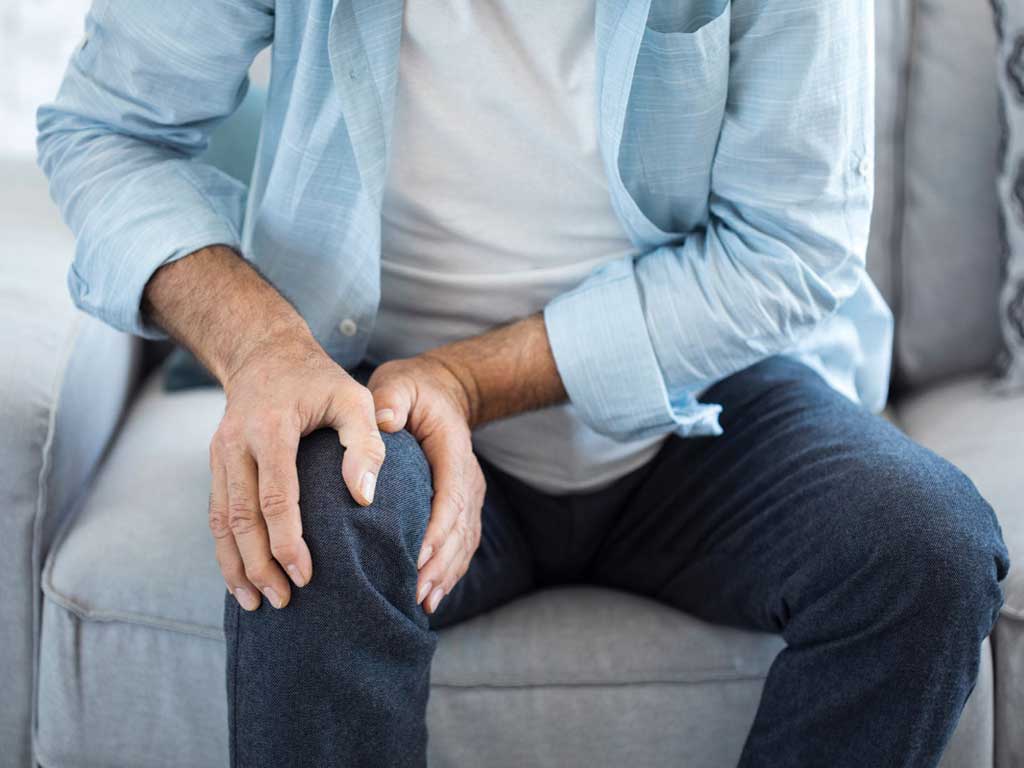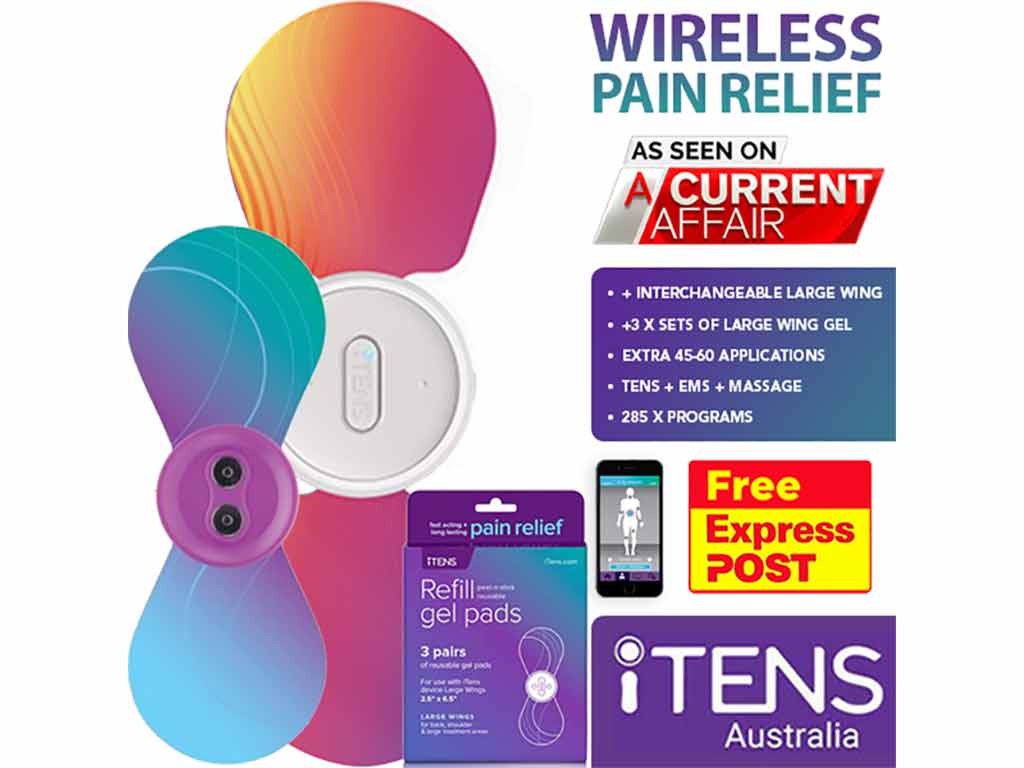
Transcutaneous Electrical Nerve Stimulation or TENS therapy for knee pain is an effective method of pain relief. It utilises a device that delivers electrical currents to the affected area. Accordingly, this electrical stimulation works in various mechanisms. It blocks the transmission of pain signals and triggers the release of endorphins. Furthermore, conducting e-stim therapy is easy. Begin by preparing the skin in the treatment area. Then, place the electrodes. Finally, turn on the device and adjust the settings.
Acute knee pain or chronic knee pain can be debilitating. It can affect daily activities and the quality of life. Traditional management of pain may include physical therapy, medication, and surgery. However, they may not always provide relief from pain. Nevertheless, TENS electrical stimulation therapies offer a safe and effective solution for managing knee ailments. This article will present a TENS unit for knee pain, how it works, and how to conduct it.
What is TENS Therapy for Knee Pain?
Knee ailment is a common musculoskeletal complaint that can stem from various causes. These may include injuries, overuse, arthritis, or medical conditions. It often manifests as discomfort, stiffness, swelling, or activity limitation in the knee joint. The pain intensity can range from mild pain to severe pain. Fortunately, the TENS machine for knee pain provides positive treatment outcomes.
The TENS therapy for knee pain is a type of therapy that involves the use of a small battery-operated device. This unit delivers electrical currents to the knee region via electrodes as a method of pain relief. Furthermore, physical therapists and healthcare professionals commonly employ it. Also, individuals suffering from acute pain or chronic pain in the knee may use it at home or on the go.
TENS devices are available in both wired and wireless configurations. Thus, it allows for convenient application and personalised use. Wired TENS units utilise lead cables to connect the electrodes to the central machine. Meanwhile, wireless TENS units use wireless technologies like Bluetooth. Nevertheless, they can control the electrical stimulation manually or on a smartphone.
Causes of Knee Pain
- Knee osteoarthritis: Joint pain, stiffness, and discomfort often characterise it due to the degeneration of the cartilage within the knee joint.
- Torn ligament: Injuries to the ligaments, such as the Anterior Cruciate Ligament (ACL), can lead to knee instability and discomfort.
- Meniscus tears: Tears in the meniscus can cause sharp discomfort, swelling, and restricted movement.
- Tendonitis: It is an inflammation of the tendons surrounding the knee joint. The condition can result in localised pain, swelling, and tenderness.
- Post-traumatic knee ailment: After experiencing a knee injury, individuals may continue to have persistent discomfort due to lingering tissue damage and nerve sensitivity.

How TENS Therapy for Knee Pain Works
The TENS therapy for knee pain works through various mechanisms. Foremost, the electrical pulses from TENS can stimulate the production and release of endorphins. These are the chemicals of the body that act as natural painkillers. Endorphins act as neurotransmitters and can bind to opioid receptors. As a result, it can reduce pain scores and produce feelings of well-being.
TENS treatment also operates based on the Pain Gate Control Theory. It suggests that the brain is regulated by a “gate” mechanism within the spinal cord. Then, the electrical signals from TENS can help close this “pain gate”. Therefore, it restricts or blocks the passage of pain signals to the brain. Thus, individuals may experience reduced sensitivity to knee ailments.
Furthermore, the electrical currents can contribute to the dilation of blood vessels and enhance blood circulation in the knee. This mechanism can promote the delivery of oxygen and nutrients to the tissues. Additionally, the electrical impulses can stream in low and high frequencies. Low-frequency TENS operates at below 10 Hz and is beneficial for chronic conditions. Meanwhile, high-frequency TENS operates above 50 HZ and is valuable for acute conditions.
Benefits of TENS Treatment
TENS therapy stands out as a non-invasive treatment modality. It does not involve surgical procedures or penetration of the skin. Furthermore, TENS treatment is drug-free. Hence, individuals can reduce their reliance on oral medications or analgesics. Additionally, TENS units offer customisability. It allows people to tailor treatment parameters according to specific needs and preferences.
The treatment is also cost-effective. It eliminates the ongoing expenses associated with medication refills, recurring visits to healthcare providers, or surgical interventions. Moreover, TENS therapy is a complementary approach to other conventional treatment strategies. It can work alongside physical therapy and exercise programs.

How to Conduct TENS Therapy for Knee Pain
Following a systematic approach is essential to conduct TENS therapy for knee pain. First, prepare the TENS unit and its accessories. Then, prepare the skin in the treatment areas and place the electrodes. Adhering to the proper pad placement guide is vital in this step. Afterwards, connect the electrodes to the central machine or a smartphone via Bluetooth for wireless.
Next, turn on the TENS device by pressing a specific button. The individuals can proceed to adjust the settings. It may include customising the frequency, intensity, and duration of electrical stimulation. Also, some advanced models have pre-set programs. Thus, select the program for knee pain. Nevertheless, begin with the lowest settings and gradually increase it to a comfortable level.
After completing the TENS unit setup, activate the unit to initiate the therapy session. Individuals may experience a buzzing or tapping sensation. Throughout the therapy, it is crucial to monitor any sensations. The treatment duration can vary. Typically, it lasts between 15 to 30 minutes. Once the treatment is complete, turn off the TENS device and carefully remove the electrodes.
Pad Placement Guide
Before placing the electrodes, pinpoint the specific site of knee discomfort. Accordingly, clean and dry the skin to ensure optimal adhesion and conductivity. When positioning the pads, consider the location of the ailment and the surrounding anatomy. It is advisable to place the pads above and below or on either side of the area of pain. Avoid placing the electrodes directly on bony prominences.
Additionally, ensure an even spacing between the electrodes. Doing so facilitates comprehensive coverage of the knee area and allows for the uniform distribution of electrical stimulation. Nevertheless, individuals can adjust the pad placement depending on their comfort level and effectiveness.
Conclusion
Osteoarthritis, torn ligament, tendonitis, and post-traumatic knee ailment are the common causes of knee discomfort. Fortunately, TENS therapy for knee pain is an effective treatment option. It involves a wired or wireless device that delivers electrical currents to the knee area. Accordingly, TENS works by blocking the transmission of pain signals, triggering the release of endorphins, and enhancing blood flow. Additionally, the electrical pulses can stream in low and high frequencies.
Furthermore, TENS presents numerous benefits. It is non-invasive, drug-free, customisable, cost-effective, and can complement other treatment modalities. Moreover, conducting TENS therapy is easy. One needs to prepare the device. Then, identify the specific location of the knee ailment and place the pads. Finally, turn on the device, adjust the settings, or choose a pre-set program. However, individuals should follow the proper pad placement for optimal and effective TENS therapy experience.




















